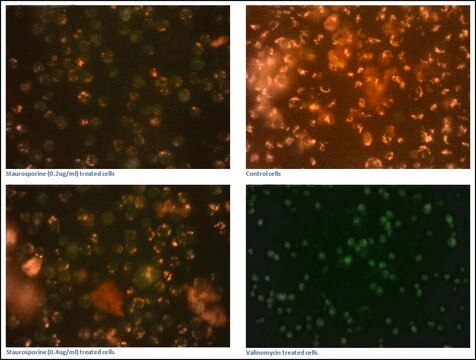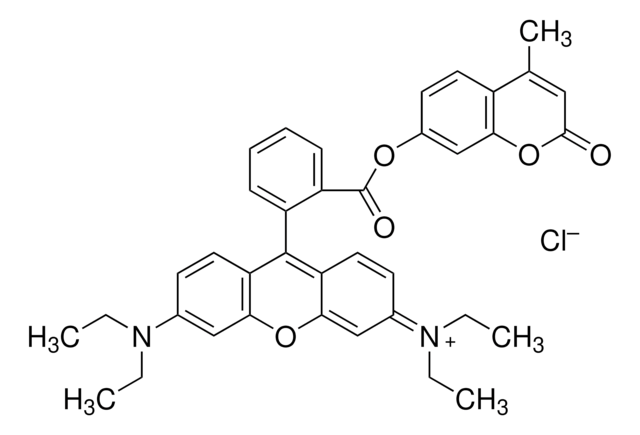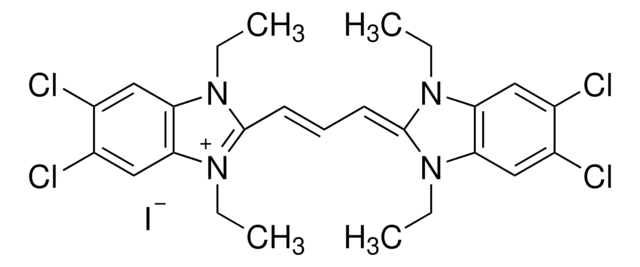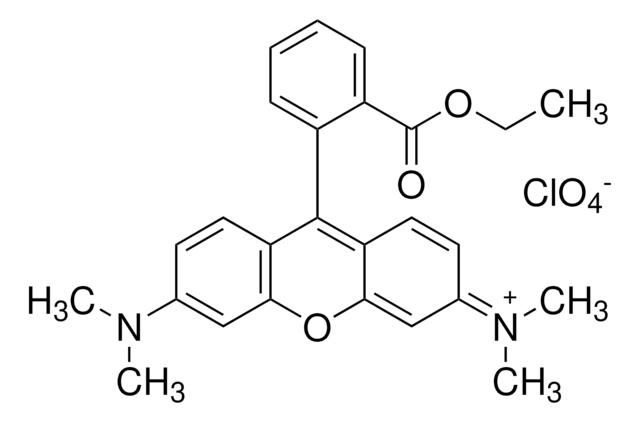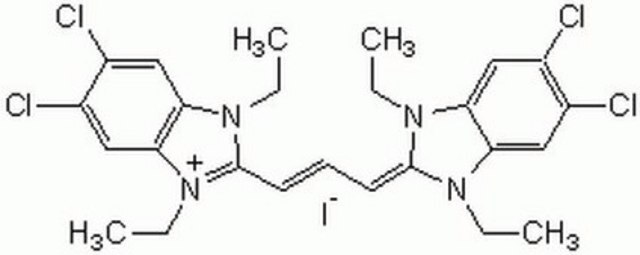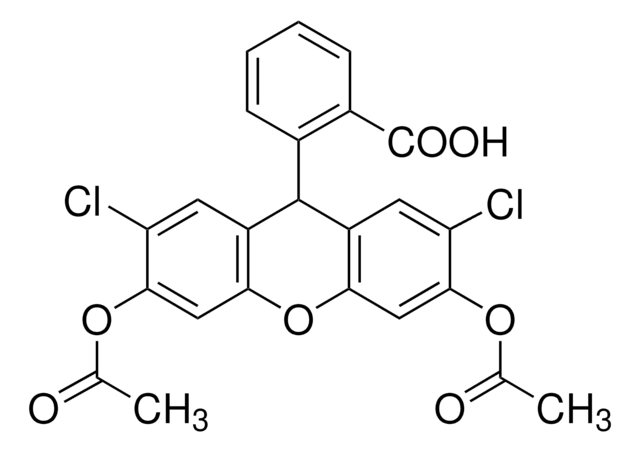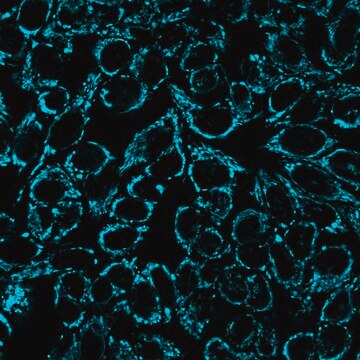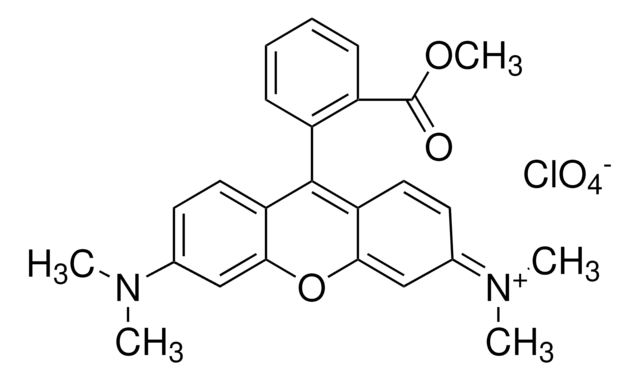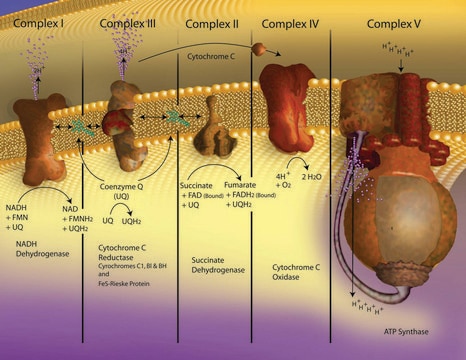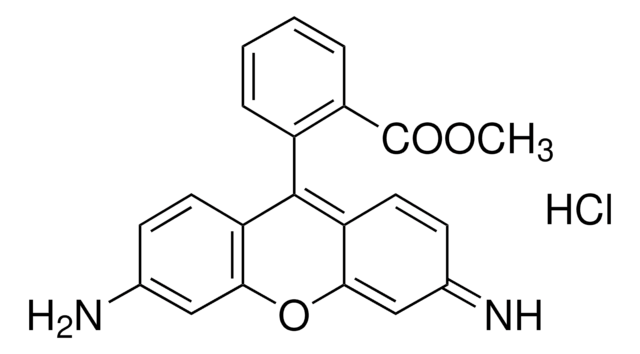MAK147
Mitochondrion Membrane Potential Kit
sufficient for 500 fluorometric tests (orange fluorescence, microplate readers)
Sign Into View Organizational & Contract Pricing
All Photos(2)
About This Item
UNSPSC Code:
12161503
NACRES:
NA.25
Recommended Products
usage
sufficient for 500 fluorometric tests (orange fluorescence, microplate readers)
detection method
fluorometric
relevant disease(s)
cancer
storage temp.
−20°C
Related Categories
General description
Mitochondria generate a potential across their membranes due to the activities of enzymes of the electron transport chain. During apoptosis, collapse of the mitochondrial membrane potential (MMP) coincides with the opening of the mitochondrial permeability transition pores, leading to the release of cytochrome c into the cytosol, which in turn triggers other downstream events in the apoptotic cascade.
Application
Mitochondrion Membrane Potential Kit has been used to estimate the mitochondrion membrane potential in chinese hamster ovary (CHO) cells. It has been used in the permeabilization of the mitochondrial membrane test (MMP assay) and also used to detect the loss of mitochondrial membrane permeabilization.
Suitability
This kit is suitable for the detection of mitochondrial membrane potential (MMP) in mammalian cells and for screening apoptosis inhibitors and activators using microplate readers.
Principle
Mitochondrion Membrane Potential Kit is optimized for the detection of the loss of the MMP in cells. The cationic hydrophobic mitochondrial potential dye accumulates in normal mitochondria, most likely due to the mitochondrial potential, resulting in an increase in fluorescence (λex = 540/λem = 590 nm). In apoptotic cells, MMP collapse results in decreased fluorescence. This kit can be used for monitoring apoptosis and for screening apoptosis inhibitors and activators.
Storage Class Code
10 - Combustible liquids
WGK
WGK 1
Flash Point(F)
Not applicable
Flash Point(C)
Not applicable
Certificates of Analysis (COA)
Search for Certificates of Analysis (COA) by entering the products Lot/Batch Number. Lot and Batch Numbers can be found on a product’s label following the words ‘Lot’ or ‘Batch’.
Already Own This Product?
Find documentation for the products that you have recently purchased in the Document Library.
Customers Also Viewed
Chloro (triphenylphosphine) gold (I) a forefront reagent in gold chemistry as apoptotic agent for cancer cells.
Chrysouli M P, et al.
Journal of Inorganic Biochemistry, 179, 107-120 (2018)
A zombie LIF gene in elephants is upregulated by TP53 to induce apoptosis in response to DNA damage
Vazquez J M, et al.
Cell Reports, 24(7), 1765-1776 (2018)
New metalo-therapeutics of NSAIDs against human breast cancer cells.
Banti C N, et al.
European Journal of Medicinal Chemistry, 143, 1687-1701 (2018)
A Zombie LIF Gene in Elephants Is Upregulated by TP53 to Induce Apoptosis in Response to DNA Damage.
Juan Manuel Vazquez et al.
Cell reports, 24(7), 1765-1776 (2018-08-16)
Large-bodied organisms have more cells that can potentially turn cancerous than small-bodied organisms, imposing an increased risk of developing cancer. This expectation predicts a positive correlation between body size and cancer risk; however, there is no correlation between body size
Ngoc An Le et al.
Journal of medicinal chemistry, 64(10), 6792-6801 (2021-05-15)
Photodynamic therapy (PDT) is used to treat various cancerous diseases. Recently, we have demonstrated that platinated pyridyl-substituted porphyrins are potent agents for PDT with very high phototoxicity (IC50 down to 17 nM) and excellent phototoxic indices of higher than 5800
Our team of scientists has experience in all areas of research including Life Science, Material Science, Chemical Synthesis, Chromatography, Analytical and many others.
Contact Technical Service
